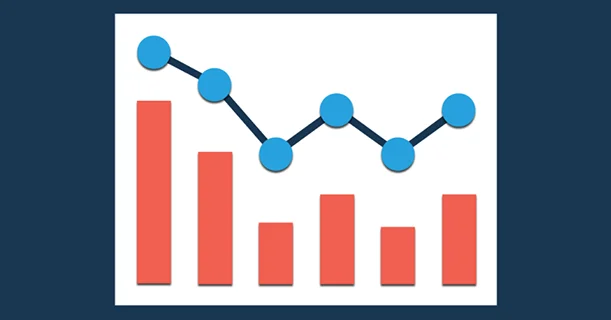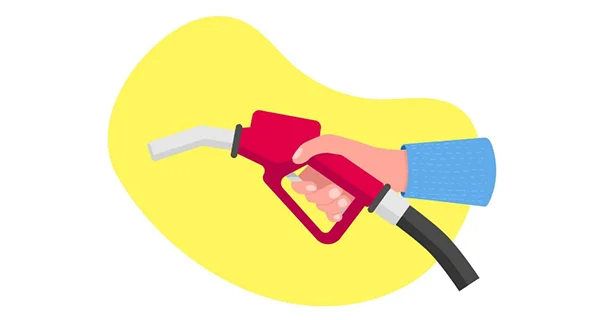The EOFY is upon us with only 2 more months to go so it’s all downhill from here folks!
Speaking of End of Financial Year, it’s probably about time of dust off that old shoe box under your bed. You know, the one that’s full of Receipts you’ve been collecting since July… Time to start trawling through those. If you’d like to get organised ahead of 30 June, don’t forget you can upload your tax information to SmartVault so everything is ready to go for tax time 🙂 There’s also a plethora of checklists available for you to use in the SmartVault to help you put your Tax Return information together if you’re not sure what to claim. If you’re not sure where to find these, haven’t activated activated or need help with the vault you’re always welcome to give us a call and Cathie or Jess can help you out over the phone (we promise they don’t bite!). If you’ve uploaded everything ahead of time, just give us a yell when you’re ready for your return to be booked in and we’ll get that sorted for you.
A quick reminder, that if you’re in receipt of wages and salary income, your employer has until 14 July to finalise their STP (i.e., your income statement) with the Tax Office. We won’t be able to lodge returns until this has been finalised with the ATO. We see a lot of returns held up each year because they’ve been prepared prior to STP finalisation. During this time the amounts can change so it’s best to wait until your Income Statement is ‘Tax Ready’.
You can keep an eye on this if you have a myGov account linked with the ATO Online Services. Once you get the green light that says your income statement is Tax Ready you’re good to go!
Outstanding 2023 Tax Returns
If you’re still yet to lodge your 2023 Tax Return time is now running out. Our accountants are chock-a-block with Tax Planning and BAS’s at the moment so appointments are few and far between. If you haven’t lodged yet please call us ASAP to make an appointment (or send us your information!) and we will do our best to get you in before the deadline.
Tax Planning For 2024
Tax Planning for 2024 is in full swing! Chris has been busy devising plans for our business clients to mitigate any nasty tax bills that can be avoided and ensuring nothing unexpected pops up before the end of the 2024 Financial year. It’s a great way to know what your tax position is ahead of the end of financial year. It also provides an opportunity to find out if making additional deductions prior to 30 June is worthwhile. It could be the difference between a tax bill and juicy refund. If Tax Planning is something you might be interested in please don’t hesitate to reach out and we’ll get you booked in!
Australian Federal Budget 2024-25
The Federal Budget for the 2024-25 financial year is expected to be handed down on Tuesday 14 May 2024. We’ll be providing a special edition newsletter to break that down with that that means for you and your business.
Did You Know…?
Superannuation Guarantee is compulsory and must be paid on the due date every 3 months, if fail to pay on time it could cost you more than you originally are obligated to pay.
Superannuation Guarantee contributions are compulsory contributions that your employer must pay in respect to your ordinary times earnings, a.k.a. wages. In the 2023-24 income year this is 11% (11.5% effective 01 July 2024) of your earnings. Employers are obligated by law to pay their employees superannuation guarantee quarterly amounts into their employees superannuation funds by the nominated due date. The due date is the 28th of the preceding month of the quarter. So, for example, the June 2024 quarter ends on the 30th of June 2024, the Superannuation Guarantee payments for the June quarter must land into the employee’s superannuation fund by the 28th of July 2024.
What happens if you fail to pay the entire amount or are late in payment? You are then required to pay what is called the Superannuation Guarantee Charge (SGC) through lodging an SGC statement to the ATO. These SGC statements are due by the 28th of preceding month after the due date of when the superannuation guarantee was initially due (i.e., following from previous example, due date for superannuation guarantee being the 28th of July, SGC statement due by the 28th of August).
The SGC amount is made of 3 components; first is the amount for the quarter that was not paid on time, whether that be the entire amount or a portion of the quarterly amount not paid, this also includes overtime, which usually isn’t included in the compulsory superannuation guarantee contribution; secondly there is a nominal interest amount of 10% p.a. which accrues from the start of the relevant quarter; and thirdly an administration fee of $20 per employee, per quarter. Also, it is worthy to note that the SGC charge amount becomes non-deductible against your business income.
As you can see, there are many benefits to paying your employee’s superannuation on time, one being you do not pay any more than you have to and two the compulsory superannuation guarantee contribution you pay is deductible whereas the SGC charge is not.
If you require more assistance with the understanding of your superannuation obligations, please feel free to call us so we can assist you further.
Messages from the ATO
Small Business Benchmarks
The ATO has updated the small business benchmarks for 2021-22. The benchmarks help you compare your business turnover and expense to other small business in the same industry.
Read more
Tips For Getting Your Fuel Tax Credit Rates Right
Claiming Fuel Tax Credits on your Quarterly Business Activity Statement (BAS)? Remember the rates changed on 05 February so make sure you’re using the latest rates for the dates you acquired fuel.
Read more
Pay your Tax On Time and $ave!
If you’re struggling to meet your Tax obligations on time, there are things you can do to smooth out your cash flow and ensure you’re on track to pay your upcoming payments due.
Read more
New Options For Keeping Fringe Benefits Tax Records
From April 1, employers have a choice to use existing corporate records for certain fringe benefits provided to staff. This may be particularly helpful if you have difficulty obtaining declarations from staff on time.
Read more
Thinking Of Claiming Personal Super Contributions As A Tax Deduction?
Claiming a tax deduction for your personal super contribution (a.k.a. voluntary, after-tax, or non-concessional contribution) or standard member contribution may have 3 main benefits:

Pay Less tax
Claiming a tax deduction when completing your tax return lowers your taxable income – so depending on your income, you could pay less tax.

Grow your super
Any extra contributions you make now create a big difference to how much you end up with over time.

Investment tax benefits
Adding to your super is not just a boost to your tax return. Investment earnings in super are taxed at up to 15%, which may be lower than the tax you pay on your income.
You can claim a tax deduction for:
- Any personal after-tax super contributions (e.g. BPAY)
- After-tax standard member contributions to an accumulation account (some employees of Qld Government make these).
To make a claim:
1. Check how much you paid in personal contributions or standard contributions this financial year. You can check this online through your Super provider.
2. Complete the ‘Claim you tax deduction’ on through your Member Account online
OR
Complete a Notice of Intent to Claim a Tax Deduction form and post to your fund.
3. Your superfund will contact you to let you know once they’ve processed your request – we won’t be able to submit your Tax Return without your Acknowledgement Letter.
Fringe Benefits Tax (FBT) Exemption on Eligible Vehicles
Vehicles eligible for limited private use FBT exemption are as follows:
- Taxi
- Panel van
- Single and dual cab Utes
- Four-wheel drive vehicles (other than utes)
- Modified and other vehicles
Generally, these vehicles are considered exempt for FBT purposes as long as the private use of the vehicle is irregular, infrequent and minor. However, employers can rely on the FBT exemption only if:
- The vehicle is provided to the employee for performing work related activities and the employee is a current employee.
- The vehicle’s value has to be less than the luxury car threshold for the respective financial year.
- The vehicle is not provided as part of a salary packaging agreement and the employee should not receive any additional remuneration for using the vehicle.
- There should be rules in place that limits the private use of the vehicle to minimum or none.
- The utility can be used for travelling between employee’s home and place of work, any detours adds no more than 2kms of the trip. Examples of detours can be grocery shopping, school pick up or drop off, etc.
- When the journey is completely private in nature, the vehicle should not be used to travel:
- More than 1000kms in total.
- A return trip that exceeds 200kms.
When employers choose to rely on the above guideline, they do not need to keep records of the vehicle to demonstrate that the private use of the vehicle is irregular, infrequent and minor. However, employers must check that the guidelines are satisfied.
Talk To You Soon!
That’s it from us this month but we’ll be in touch soon with that special edition break down of the Federal Budget for you so keep an eye out for that.
Otherwise, if you have any questions, please don’t hesitate to contact us!






